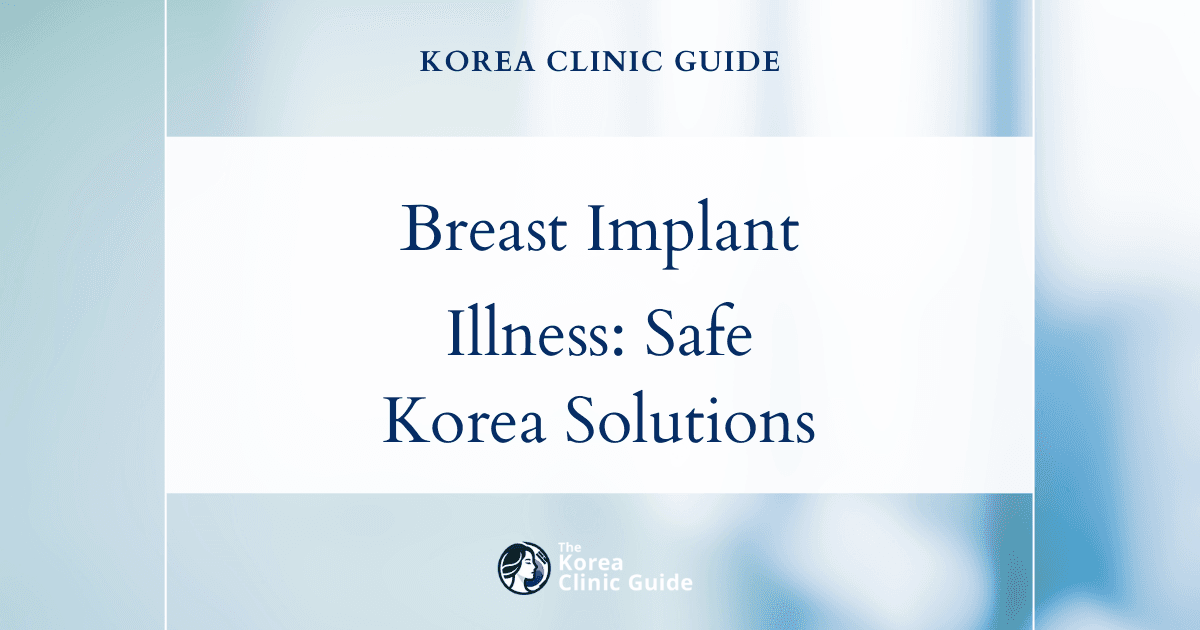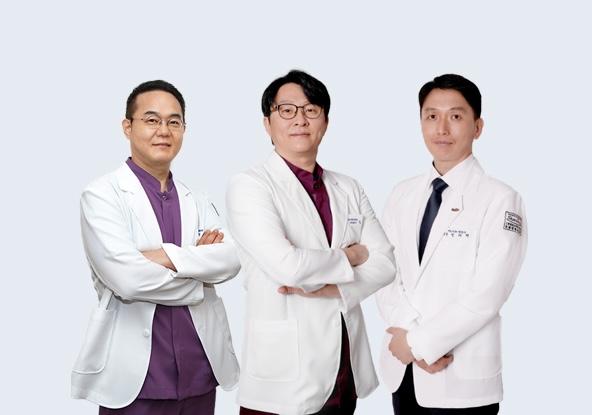Medical Tourism Blog
Gynecomastia in Korea | Best Clinics, Costs, Procedure Types & More

Table of contents
- What Is Gynecomastia?
- Best Clinics in Korea for Gynecomastia
- Gynecomastia in Korea
- Alternatives to Gynecomastia
- Conclusion
Did you know that gynecomastia, the enlargement of breast tissue in males, affects up to 65% of men at some point in their lives? As gynecomastia becomes more understood and treatments advance, Korea stands out as a key destination for those seeking both surgical and non-surgical solutions, offering cutting-edge care alongside cultural immersion.
What Is Gynecomastia?
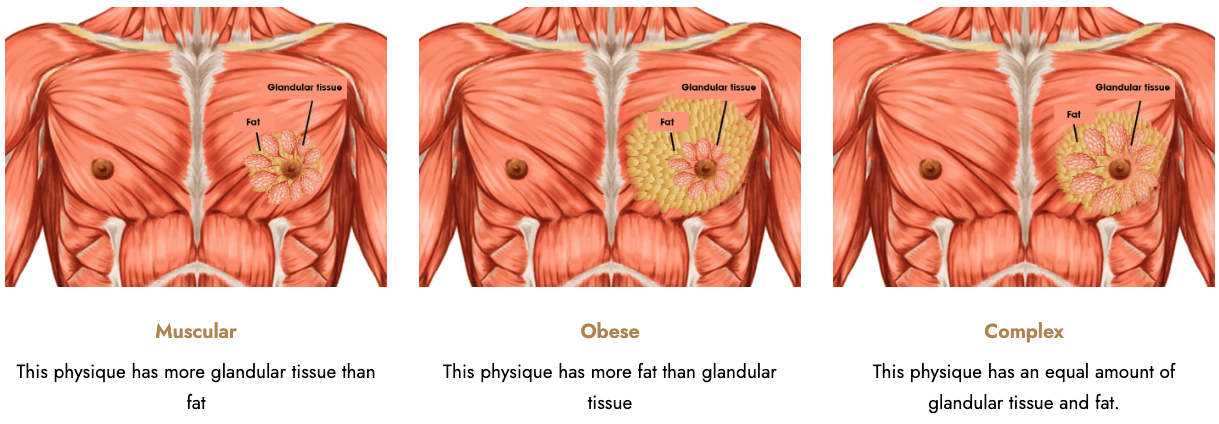
Gynecomastia is a medical condition characterized by the enlargement of breast tissue in males. This condition is often due to an imbalance between the hormones estrogen and testosterone. While it can affect men at any age, it is more common during infancy, adolescence, and middle to older age.
Causes of Gynecomastia
Several factors can contribute to the development of gynecomastia, including:
- Hormonal Imbalance: Shifts in the levels of estrogen and testosterone.
- Medications: Some drugs, such as anabolic steroids, certain anti-androgens, and some psychiatric medications, may cause breast enlargement.
- Substance Abuse: Alcohol, marijuana, and heroin are known to be contributors.
- Health Conditions: Liver disease, obesity, thyroid disorders, and tumors can also lead to gynecomastia.
Who Can Benefit from the Procedure?
Men who experience physical discomfort, psychological stress, or self-esteem issues due to enlarged breast tissue can significantly benefit from surgical intervention. Ideal candidates include:
- Healthy Individuals: Those in good overall health without life-threatening illnesses or medical conditions that can impair healing.
- Non-Smokers: Smoking can interfere with the healing process.
- Mature Adults: Those whose breast development has stabilized. Adolescents might require a secondary procedure if breast development continues.
Types of Procedures
There are several surgical approaches to treat gynecomastia, primarily depending on the severity of the condition and the desired outcome:
Liposuction
- Description: Liposuction is often used when gynecomastia primarily consists of excess fatty tissue.
- Procedure: It involves making small incisions and inserting a cannula to suction out the excess fat.
- Pros: Minimally invasive with a relatively quick recovery time.
- Cons: Ineffective for glandular tissue; residual firmness may remain.
Excision
- Description: Excision is necessary when glandular tissue or excess skin must be removed.
- Procedure: This method involves making larger incisions around the areola or under the arm to remove glandular tissue, excess skin, or reposition the nipple.
- Pros: Effective for more severe cases; can achieve significant contouring.
- Cons: More invasive, longer recovery period, and potential for visible scarring.
Combination Approach
- Description: Often, a combination of liposuction and excision is the most effective treatment.
- Procedure: This combines the two techniques to remove both fat and glandular tissue while possibly tightening the skin.
- Pros: Comprehensive and effective for most types of gynecomastia.
- Cons: Longer surgery duration and recovery time.
Pros & Cons of Gynecomastia Surgery
Pros
- Improved Physical Appearance: A more masculine chest contour.
- Increased Confidence: Reduced feelings of embarrassment or self-consciousness.
- Physical Comfort: Relieves discomfort related to excess breast tissue, such as tenderness or skin irritation.
- Long-lasting Results: Once the excess tissue is removed, the results are typically permanent, provided the patient's weight remains stable.
Cons
- Surgical Risks: As with any surgery, there are risks, including infection, bleeding, and adverse reactions to anesthesia.
- Scarring: Depending on the type of procedure, noticeable scars may develop.
- Recovery Time: The recovery period can vary but typically requires several weeks of limited activity.
- Cost: The procedure can be expensive, and not all insurance plans cover it unless it's deemed medically necessary.
Understanding the complexities of gynecomastia and its treatments can help those affected by this condition to make informed decisions regarding their health and well-being.
Best Clinics in Korea for Gynecomastia
Listed below are the best clinics in Korea for gynecomastia:
| Clinic Name | Key Features | Special Techniques |
|---|---|---|
| Lydian Plastic Surgery Clinic | Located in Cheongdam, Gangnam; leader in body sculpting and gynecomastia; led by Dr. An Kyung Chun (pioneer in 5D liposuction); tailored procedures; utilizes over 30 types of specialized liposuction cannulas; minimal, well-hidden incisions; Quantificare 3D imaging; thorough four-stage aftercare for swelling, irregularities, elasticity, contour | High-definition (5D) liposuction; anatomy-based personalized body design; comprehensive skin care for stretch marks and sagging; innovative, advanced technology |
| Seojin Plastic Surgery Clinic | Located in Gangnam; led by Dr. Lee Hyung-Min (one of Korea’s 100 Good Doctors); personalized, attentive care; all-male staff for male patient comfort; bilingual support for international patients; advanced scar management; one-doctor care throughout | Combination of glandular tissue removal, targeted liposuction, and Velody II lifting; small partial-areola incisions for minimal scarring; scarless Velody II lifting; semi-permanent scar concealment program |
| THEPLUS Plastic Surgery | Located in Garosu-gil, Gangnam; board-certified team (Dr. Lee, Dr. Kim, Dr. Jeong); large, state-of-the-art private facility; over a decade of surgical experience; comprehensive care in one facility; strong emphasis on safety, privacy, and patient education | Tailored gynecomastia surgery; multi-disciplinary approach blending aesthetics and function; advanced techniques for minimal scarring and fast recovery; continuous medical research and innovation |
Lydian Plastic Surgery Clinic
Located in the prestigious Cheongdam area of Gangnam, Seoul, Lydian Plastic Surgery Clinic has established itself as a leader in body sculpting and gynecomastia treatment, renowned for its tailored approach and outstanding surgical outcomes. Led by Dr. An Kyung Chun—recognized as one of Korea’s top aesthetic plastic surgeons and a pioneer in high-definition (5D) liposuction—the clinic is distinguished by its innovative techniques, personalized body design, and meticulous attention to detail. Patients benefit from custom procedures performed using over 30 types of specialized liposuction cannulas, minimizing scarring to just one or two tiny incisions that are carefully hidden for discreet results.
Lydian Clinic goes beyond simple fat removal by offering comprehensive skin care solutions for stretch marks and skin sagging, utilizing advanced technology and equipment for an all-in-one approach. Emphasizing anatomy-based body design, the clinic ensures that each patient receives a plan perfectly suited to their unique physique, supported by Quantificare 3D imaging for precise before-and-after analysis. With a thorough, four-stage aftercare system—addressing swelling, skin irregularities, elasticity, and contouring—patients enjoy smooth and confident recoveries. Lydian’s blend of world-class expertise, advanced medical equipment, and bespoke artistry makes it the ideal destination for anyone seeking gynecomastia surgery or other body contouring procedures in Korea.
You can check out their website here: Lydian Plastic Surgery Clinic Website
Seojin Plastic Surgery Clinic
Seojin Plastic Surgery Clinic, located in the heart of Gangnam, Seoul, is a highly esteemed destination for patients seeking personal aesthetic transformation, especially men experiencing gynecomastia. Led by the renowned Dr. Lee Hyung-Min—recognized as one of Korea’s 100 Good Doctors and offering more than 16 years of surgical expertise—Seojin guarantees a personalized, attentive approach from consultation through recovery. The clinic combines unwavering dedication to patient comfort with advanced technology and innovative surgical techniques, making it the premier choice for gynecomastia surgery in Korea.
Key Reasons Seojin is the Best Clinic for Gynecomastia:
-
Specialized Care for Men: A dedicated male staff supports male patients throughout their visit, ensuring maximum comfort and privacy every step of the way.
-
Comprehensive Surgical Techniques: Seojin Clinic utilizes a combination of glandular tissue removal, targeted liposuction, and Velody II lifting. This comprehensive method delivers natural, contoured results tailored to each individual.
-
Minimal Scarring, Maximum Results: Unlike traditional methods that often leave conspicuous incisions, Seojin removes excess tissue through small, partial areola incisions. This minimizes scarring while still enabling effective correction.
-
Prevention of Sagging: With advanced liposuction and the scarless Velody II lifting procedure performed through existing incisions, the clinic prevents post-surgical sagging without creating additional scars.
-
Expertise and Safety: Led by Dr. Lee Hyeong-Min, Seojin’s team combines long-standing experience with highly refined techniques to safely remove fat and glandular tissue, minimizing trauma to surrounding structures.
-
Advanced Scar Management: The clinic offers a world-class scar management program, focusing on semi-permanent scar concealment and alleviating patients’ concerns regarding visible marks.
-
Personalized One-Doctor Care: Every patient is directly managed by Dr. Lee from start to finish, ensuring meticulous attention to detail and continuity of care throughout the treatment journey.
-
Support for International Patients: Seojin Clinic welcomes clients from around the globe with bilingual staff, tailored online consultations, and comprehensive planning to make travel and treatment smooth and stress-free.
-
Restoring Confidence: Seojin’s mission extends beyond physical transformation—gynecomastia surgery is approached as a means to restore confidence, enhance self-esteem, and improve quality of life.
Begin your path to confidence and natural-looking results with a complimentary online consultation at Seojin Plastic Surgery Clinic—where expertise, innovation, and personalized care converge for optimal patient outcomes.
You can check out their website here: Seojin Plastic Surgery Clinic Website
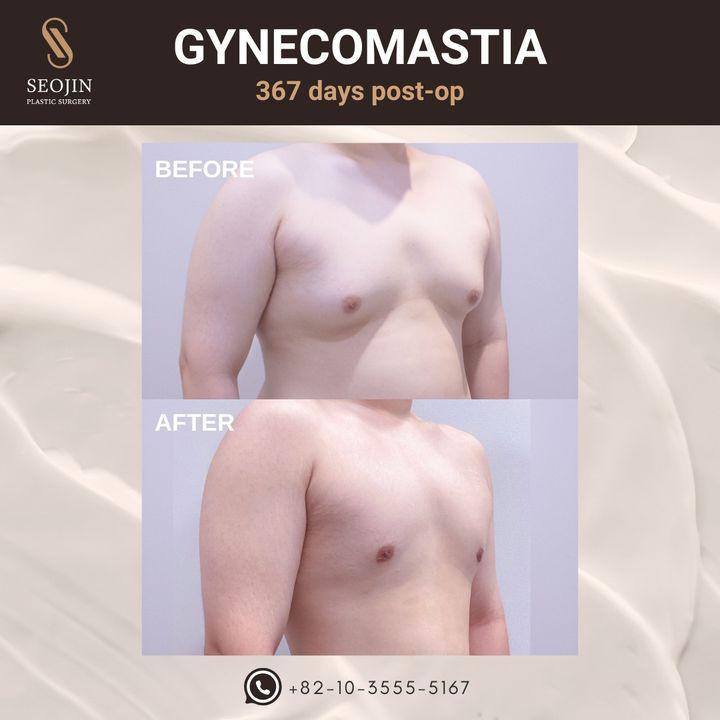
THEPLUS Plastic Surgery
THEPLUS Plastic Surgery, located in Seoul’s fashionable Garosu-gil district of Gangnam, is renowned as one of Korea’s leading centers for advanced cosmetic procedures, particularly in the field of gynecomastia surgery. Boasting a team of board-certified surgeons with exemplary credentials, the clinic combines pioneering medical expertise with a patient-centered approach, ensuring each individual receives customized care from consultation through recovery. The clinical team is led by some of Korea’s most distinguished plastic surgeons—Dr. Lee, Dr. Kim, and Dr. Jeong—each with a stellar history of academic research, surgical innovation, and international recognition. The clinic’s facilities are expansive and state-of-the-art, spanning four purpose-built floors to provide seamless, private, and comprehensive treatment. With a philosophy rooted in medical excellence, academic contribution, and genuine patient communication, THEPLUS Plastic Surgery sets the highest standard for gynecomastia management and male chest contouring.
THEPLUS Plastic Surgery — Why It’s the Best Choice for Gynecomastia:
- Leadership by esteemed, board-certified surgeons:
- Dr. Lee, breast surgery specialist, former Surgery Specialist at Seoul National University Hospital, and active member of top Korean plastic surgery societies, renowned for consistently natural, long-lasting results.
- Dr. Kim, international expert in 3D implants, rhinoplasty, and facial contouring, awarded for surgical innovation and committed educator for peers and trainees globally.
- Dr. Jeong, president of the Korean Society of Plastic Surgeons, celebrated for his multidisciplinary approach combining aesthetics and functionality in every procedure.
- A multi-disciplinary team continuously engaged in medical research, sharing their know-how through contributions to scholarly journals, books, and presentations at domestic and international conferences.
- Comprehensive and personalized patient care, with all services—from detailed consultation to surgery and aftercare—provided in a single, dedicated facility designed for safety, privacy, and comfort.
- Uncompromising standards of safety, with over a decade of surgical experience among specialists and advanced medical protocols widely recognized in the industry.
- Strategic location in Gangnam’s Garosu-gil, offering convenient access to state-of-the-art cosmetic and reconstructive surgery services.
- Tailored approach for gynecomastia treatment, ensuring optimal, natural-looking chest contours while prioritizing minimal scarring and speedy recovery.
- Strong emphasis on continuous advancement, education, and communication—ensuring every patient benefits from the latest surgical techniques and a high level of personalized support throughout their journey.
You can check out their website here: THEPLUS Plastic Surgery Website
Gynecomastia in Korea
Korea has become a popular destination for medical tourism, especially for procedures like gynecomastia surgery. Gynecomastia, a condition characterized by the enlargement of breast tissue in males, can cause significant emotional and psychological distress. Traveling to Korea for this procedure offers several advantages, including cutting-edge medical technology, highly trained specialists, and an overall patient-centered experience.
Advanced Medical Facilities
Korean hospitals and clinics are known for their state-of-the-art medical facilities. Most healthcare institutions in Korea are equipped with the latest technology, which ensures accurate diagnosis and effective treatment plans. For gynecomastia surgery, this typically involves advanced imaging modalities and surgical instruments that contribute to a more precise and minimally invasive procedure.
Highly Qualified Surgeons
Korean surgeons are globally recognized for their expertise, particularly in cosmetic and reconstructive surgeries. Many of these professionals have undergone rigorous training and possess years of experience specifically in gynecomastia procedures. Some have also received international training, contributing to their fluency in multiple treatment techniques and their ability to handle a diverse patient demographic.
Consultation and Personalized Care
Before the surgery, patients usually undergo a comprehensive consultation process. This involves detailed medical history reviews, physical examinations, and possibly imaging studies to determine the underlying cause of gynecomastia. Korean doctors prioritize patient comfort and well-being, taking the time to explain each step of the procedure and addressing any concerns or questions that may arise.
Seamless Integration of Services
Medical facilities in Korea often provide seamless integration of various services needed for gynecomastia surgery, from pre-surgical consultations to post-operative care. Such services often include transportation arrangements, accommodation recommendations, and even translation services to overcome language barriers. This ensures that international patients have a smooth and stress-free experience throughout their medical journey.
Affordable and Transparent Pricing
One of the key attractions of seeking gynecomastia surgery in Korea is the affordability when compared to prices in the United States or Europe. Despite the lower cost, patients can still expect high-quality care. Korean clinics usually maintain transparent pricing policies, which include detailed cost breakdowns so patients know exactly what to expect financially.
Post-Operative Care and Follow-Up
Following the surgery, patients can benefit from comprehensive post-operative care, which is crucial for successful recovery. Korean medical facilities often provide detailed aftercare instructions and regular follow-up appointments to monitor the healing process. Some clinics also offer specialized post-operative treatments, such as lymphatic drainage massages, to reduce swelling and improve recovery times.
Cultural Experience
Another benefit of traveling to Korea for gynecomastia surgery is the opportunity to experience the rich and diverse Korean culture. From savoring delicious Korean cuisine to exploring historical landmarks and enjoying modern shopping districts, patients can combine their medical trip with enriching activities that make their stay more enjoyable.
Overall, coming to Korea for gynecomastia surgery offers a unique blend of expert medical care and a comprehensive, patient-centric experience, all while providing the opportunity to explore a vibrant and captivating country.
Alternatives to Gynecomastia
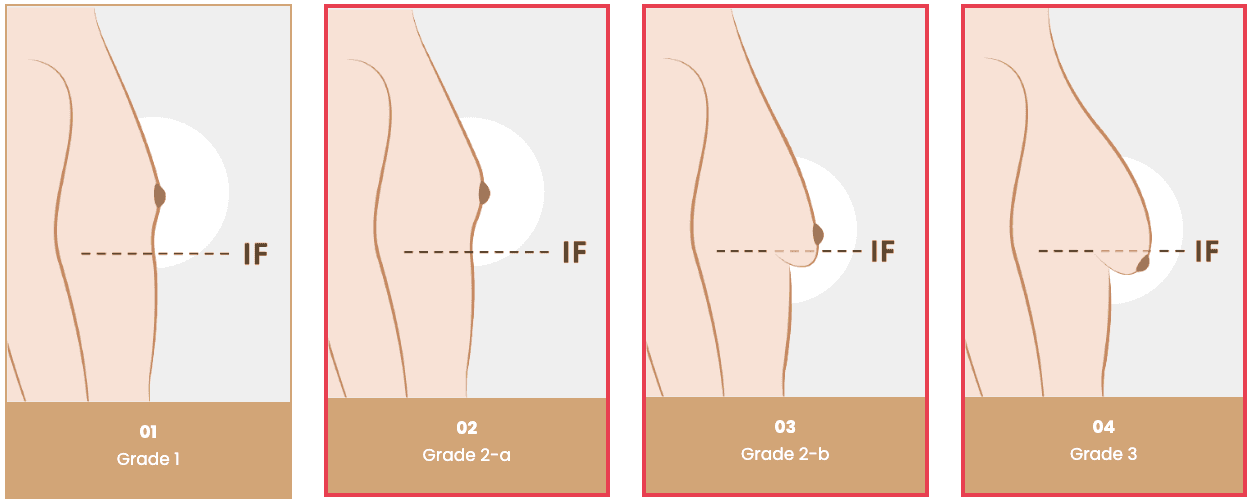
Gynecomastia, commonly caused by an imbalance of testosterone and estrogen, may not always require direct treatment. Here are three potential alternatives to surgery for managing this condition:
1. Weight Management and Exercise
For individuals with pseudogynecomastia, where the breast enlargement is due to excess fat rather than glandular tissue, weight management and exercise can be effective. Incorporating a balanced diet and regular physical activity can help reduce overall body fat, which may decrease breast size. However, it's important to note that exercise may not be effective if the gynecomastia is caused by hormonal imbalances.
2. Medications Adjustments
Certain medications and substances, such as amphetamines, marijuana, or anabolic steroids, can lead to gynecomastia. In such cases, reviewing and potentially switching medications under the guidance of a healthcare provider may help. It's essential to discuss any nonprescription medications or supplements you're taking with your healthcare provider, as they may need to alter your treatment plan to address the gynecomastia.
3. Treating Underlying Conditions
Gynecomastia can be a symptom of underlying medical conditions like hyperthyroidism, kidney disease, or low testosterone. Addressing these conditions directly can often lead to a reduction in breast tissue. For example, treating hyperthyroidism or pituitary gland tumors might alleviate the hormonal imbalance causing the gynecomastia. Working closely with a healthcare provider to manage these conditions can be a critical step in reducing gynecomastia symptoms.
Each of these alternatives targets the root causes of gynecomastia, whether they are related to lifestyle, medication, or underlying health issues. Consulting with a healthcare provider to choose the best approach for your specific situation is highly recommended.
| Procedure Price | Korean Won (₩) | USD ($) |
|---|---|---|
| Low Price | ₩4,000,000 | $2900 |
| High Price | ₩8,000,000 | $5800 |
Exchange rate as of 2025-05-22: 1 KRW = 0.0007 USD
Please note that these prices are approximate guidelines and can vary significantly based on the clinic and your individual circumstances.
Conclusion
In conclusion, while gynecomastia remains a subject often overshadowed by cultural stigmas in Korea, growing awareness and advancements in medical treatments are helping to demystify the condition. Enhanced access to specialized healthcare professionals and state-of-the-art surgical options have made it easier for men to seek effective solutions, thereby improving both physical and psychological well-being. As societal perceptions gradually shift, the conversation around gynecomastia is becoming more open, fostering a more supportive environment for those affected. Encouraging continuous dialogue and education is pivotal in ensuring that affected individuals can pursue the necessary medical care without fear of judgment or shame.




